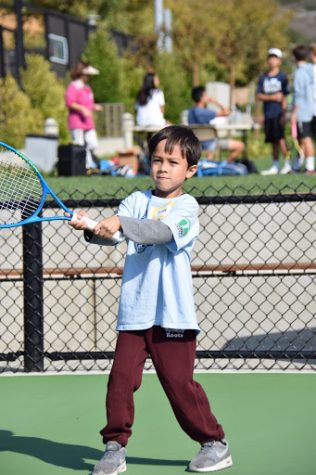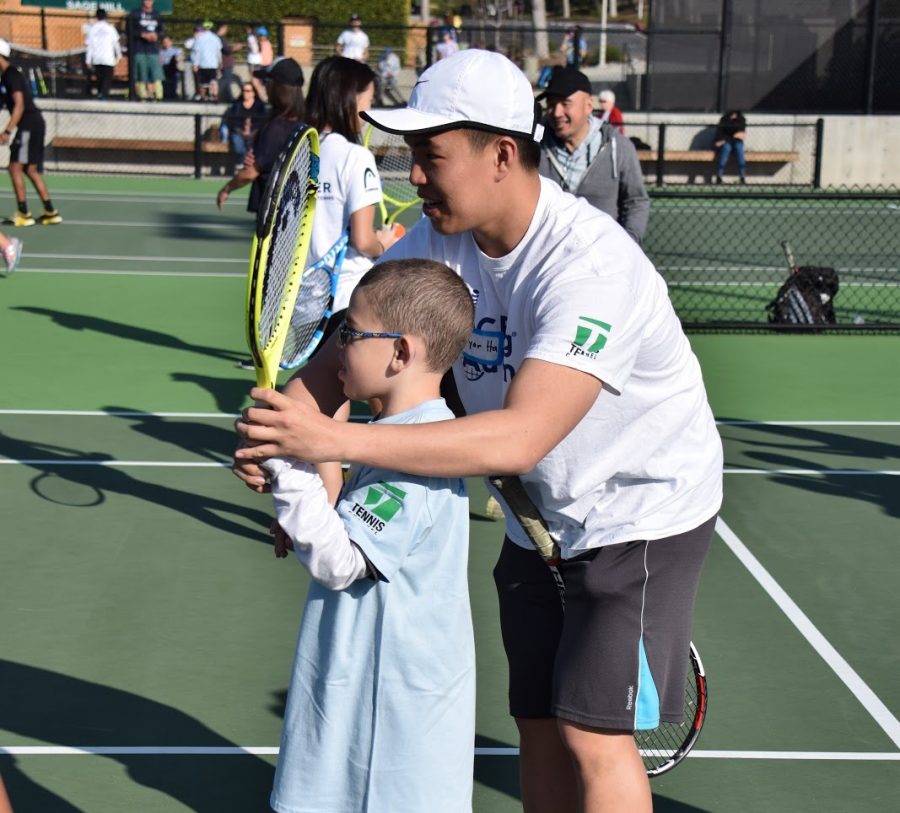ACEing Autism
How Junior Brian Yu gave kids with autism a great experience through Tennis.
Senior Ryan Ha helps an ACEing Autism participant learn how to hit a solid forehand.
March 22, 2019
Before I begin, I should point out that I am the Outreach Lead for Sage ACEing Autism. While I am striving for an article that doesn’t have any conflicts-of-interest about the program, because of my position there is an inherent bias in my writing this article, which you, as a consumer of news, should be aware of. Be informed! Ethical Journalism for the win!
It all started back in the fall of 2017. Brian Yu had a nascent idea for a service program he wanted to bring to Sage Hill. He was fresh off his first year on Varsity Tennis, and wanted to do something to contribute to the tennis community that had given him much. After volunteering for another ACEing Autism clinic in Costa Mesa and experiencing the powerful effects of the program on its participants, Brian had a plan.
ACEing Autism started its first sessions in the end of 2017, with about 25 participants. By Spring 2018, they had 30. Now, you can find the ACEing Autism team every Sunday at 3 working with over 45 participants to help them learn tennis skills and make new friendships. The positive effects of the program are hard to overlook.
“The kids are very excited to learn tennis every week. Some of the parents come to us and tell us that the tennis lessons have become a fixture and a highlight in their kid’s routine.”
Yu said. “ACEing Autism offers [these kids] a chance to improve their motor skills through learning a new sport, while also having fun with others.”
In an average hour-long ACEing Autism clinic, volunteers work with their ASD (Autism Spectrum Disorder) partners on a number of different coordination drills, exercises, and tennis games. Participants start the clinic with a warm-up lap around the track, then practice their hand-eye coordination—in the “ice-cream game”, participants catch tennis balls in plastic cones, making their own ice cream!
Tennis practice takes up the bulk of the clinic, as kids work line drills on volleys, groundstrokes, and serving techniques. If there’s time left over, sometimes the volunteers can even get a couple rallies going! The program closes with a team-bonding exercise like the “pancake stack” drill, demanding coordination and group action from every member of the team.
ACEing Autism is more than simply a tennis camp, however, in the broad goals that it’s trying to achieve—helping children with Autism, who commonly are socially isolated from the rest of society, make new friends and come out of their bubbles.
“Many kids with autism don’t get a chance to get out a lot on the weekends to exercise or socialize“, said Yu, elaborating on how ACEing Autism’s friendly atmosphere and inherent social character facilitated these necessary and valuable connections.
As the Spring 2019 season winds down and ACEIng Autism moves into the future, Yu expressed confidence in its growth and the future experience of the program.
“We are looking to expand the program a little more, as well as further improve the curriculum and training for volunteers”, he stated. “We’re always looking to better the experience for the volunteers and the kids”.

An ACEing Autism participant gets ready to hit a backhand.


